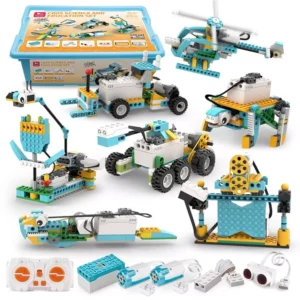Total: £69.95

Brass Knurled Threaded Heat Resistant Nut Inserts
Brass knurled threaded heat resistant nut inserts are a specialized fastening solution designed for applications that require robust mechanical performance, resistance to high temperatures, and reliable thread engagement. Combining the benefits of brass with a knurled exterior surface, these inserts provide improved grip, secure fastening, and enhanced durability in demanding environments. This article offers an in-depth look at brass knurled threaded heat resistant nut inserts, explains their benefits, highlights common applications, and provides practical guidance on how to use and install them effectively.
1. Introduction
In industries where thermal stability and mechanical strength are crucial, brass knurled threaded heat resistant nut inserts offer a reliable solution. They are engineered to withstand high temperatures while maintaining strong thread engagement in softer base materials such as aluminium, plastics, or sheet metal. Their distinctive knurled surface not only improves grip during installation but also contributes to better resistance against loosening in vibrating or high-stress environments. This guide aims to assist engineers, designers, and technicians in understanding and selecting the right nut inserts for their applications.
2. What Are Brass Knurled Threaded Heat Resistant Nut Inserts?
Brass knurled threaded heat resistant nut inserts are hardware components that create a durable, heat-stable threaded interface in materials that might not inherently provide strong threads. They are constructed from brass—a material known for its corrosion resistance, thermal stability, and excellent machinability—and feature a knurled exterior that enhances installation grip and retention.
2.1 Key Features
- Heat Resistance: Designed to withstand high temperatures without compromising structural integrity.
- Knurled Surface: Provides extra grip during installation and helps prevent loosening under vibration.
- Strong Thread Engagement: Ensures a reliable, long-lasting threaded connection even in softer base materials.
- Corrosion Resistance: Brass is naturally resistant to corrosion, making these inserts suitable for harsh environments.
- Ease of Replacement: They can be installed or replaced without significant damage to the surrounding material, facilitating maintenance.
3. Benefits of Using Brass Knurled Threaded Heat Resistant Nut Inserts
Choosing brass knurled threaded heat resistant nut inserts can offer several advantages in your assembly processes:
- Enhanced Mechanical Performance: The combination of brass’s strength and the knurled texture provides improved load distribution and resistance to wear.
- Thermal Stability: These inserts maintain their integrity in high-temperature applications, reducing the risk of thread failure due to heat.
- Improved Safety: The secure thread engagement minimizes the likelihood of fastener loosening, which is critical in dynamic or high-vibration environments.
- Long-Term Durability: Their resistance to corrosion and wear extends the life of the assembly, reducing maintenance costs.
- Versatility: They can be used in a variety of materials and applications, making them a flexible option for many industries.
4. Applications
Brass knurled threaded heat resistant nut inserts are widely used across different sectors where their unique properties provide significant advantages:
4.1 Industrial Machinery
Used in machines that operate at elevated temperatures or experience constant vibration, these inserts ensure reliable fastenings for moving parts and critical components.
4.2 Automotive and Aerospace
Their heat resistance and secure engagement make them ideal for automotive and aerospace applications, where components are often exposed to extreme conditions.
4.3 Electronics and Enclosures
In electronic housings and enclosures, the inserts help create robust, reliable threaded connections in materials that might otherwise be prone to wear and failure.
4.4 Consumer Products
For appliances and consumer products requiring a combination of aesthetic appeal, durability, and thermal stability, these inserts provide a balance of functionality and visual quality.
5. How to Use Brass Knurled Threaded Heat Resistant Nut Inserts
Proper installation and usage of these inserts are essential for achieving optimal performance. The following steps outline the process for incorporating them into your assembly:
5.1 Preparing the Base Material
- Material Selection: Verify that the base material (e.g., aluminium, plastic, or sheet metal) is compatible with the brass insert.
- Drilling the Hole: Create a hole in the base material that matches the recommended size for the insert. Precision in drilling is crucial to ensure a tight fit.
- Deburring: Smooth any rough edges around the drilled hole to facilitate the proper seating of the insert and prevent damage during installation.
5.2 Inserting the Nut Insert
- Alignment: Position the brass knurled threaded nut insert over the prepared hole. Ensure that the orientation of the knurled surface is correct for optimal grip.
- Installation: Depending on the design, either press-fit or use a specialized insertion tool to secure the insert. The knurled surface should grip the material firmly, preventing any movement.
- Verification: Once installed, verify that the insert is flush with the surface and that the threads are properly aligned. Use a thread gauge or perform a test assembly to confirm the secure installation.
5.3 Fastening and Final Assembly
- Screw/Bolt Compatibility: Ensure that the fasteners used match the thread specification of the insert.
- Torque Application: Apply the recommended torque during fastening to prevent over-tightening, which could damage the insert or the surrounding material.
- Inspection: Regularly inspect the assembly for any signs of wear or loosening, particularly in high-stress or high-temperature environments.
6. Tips and Best Practices
To maximize the performance and longevity of brass knurled threaded heat resistant nut inserts, consider the following best practices:
- Use Appropriate Tools: Invest in proper installation tools to ensure the insert is seated correctly without damaging the knurled surface.
- Follow Manufacturer Guidelines: Always consult the manufacturer’s recommendations for hole sizes, installation methods, and torque settings.
- Maintain a Clean Environment: Keep the installation area free of debris and contaminants to ensure a secure fit.
- Routine Maintenance: Periodically check assemblies for signs of wear or movement, especially in applications subject to high vibration or temperature fluctuations.
- Document Settings: Record the optimal installation parameters for future reference, especially if the assembly will be replicated in multiple units.
7. Conclusion
Brass knurled threaded heat resistant nut inserts offer a robust solution for creating durable threaded connections in a variety of materials, particularly in applications where thermal stability and mechanical performance are critical. Their unique design, combining the resilience of brass with a knurled surface for improved grip, makes them an ideal choice for industrial machinery, automotive components, aerospace applications, and consumer products. By following proper installation procedures and best practices, engineers and technicians can ensure that these inserts perform reliably, contributing to the overall strength and longevity of their assemblies. Embrace the benefits of these specialized inserts to achieve more secure, durable, and efficient designs in your next project.
Happy assembling!

